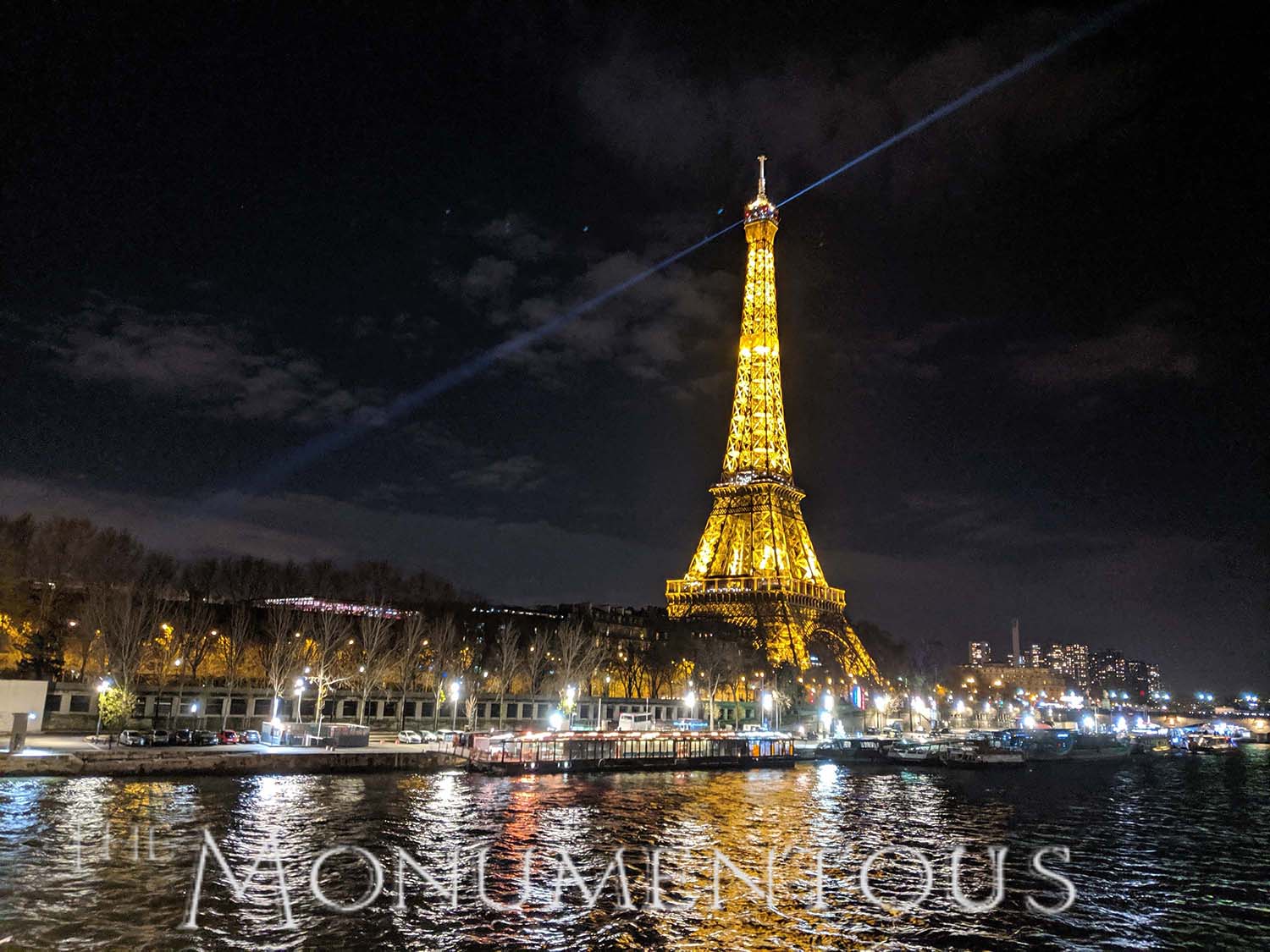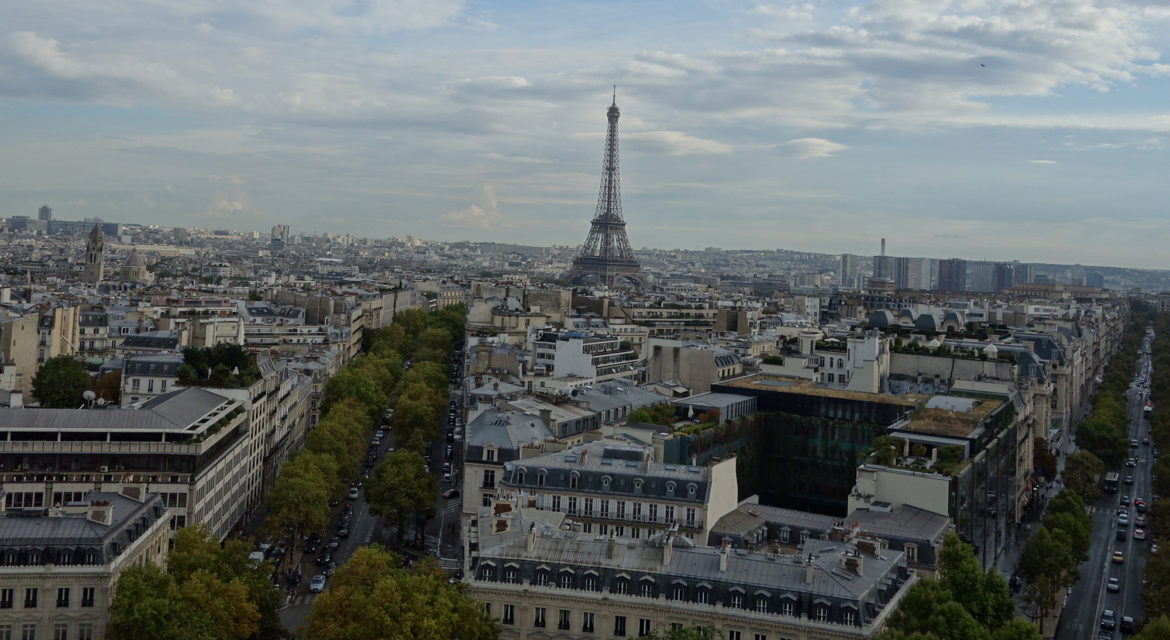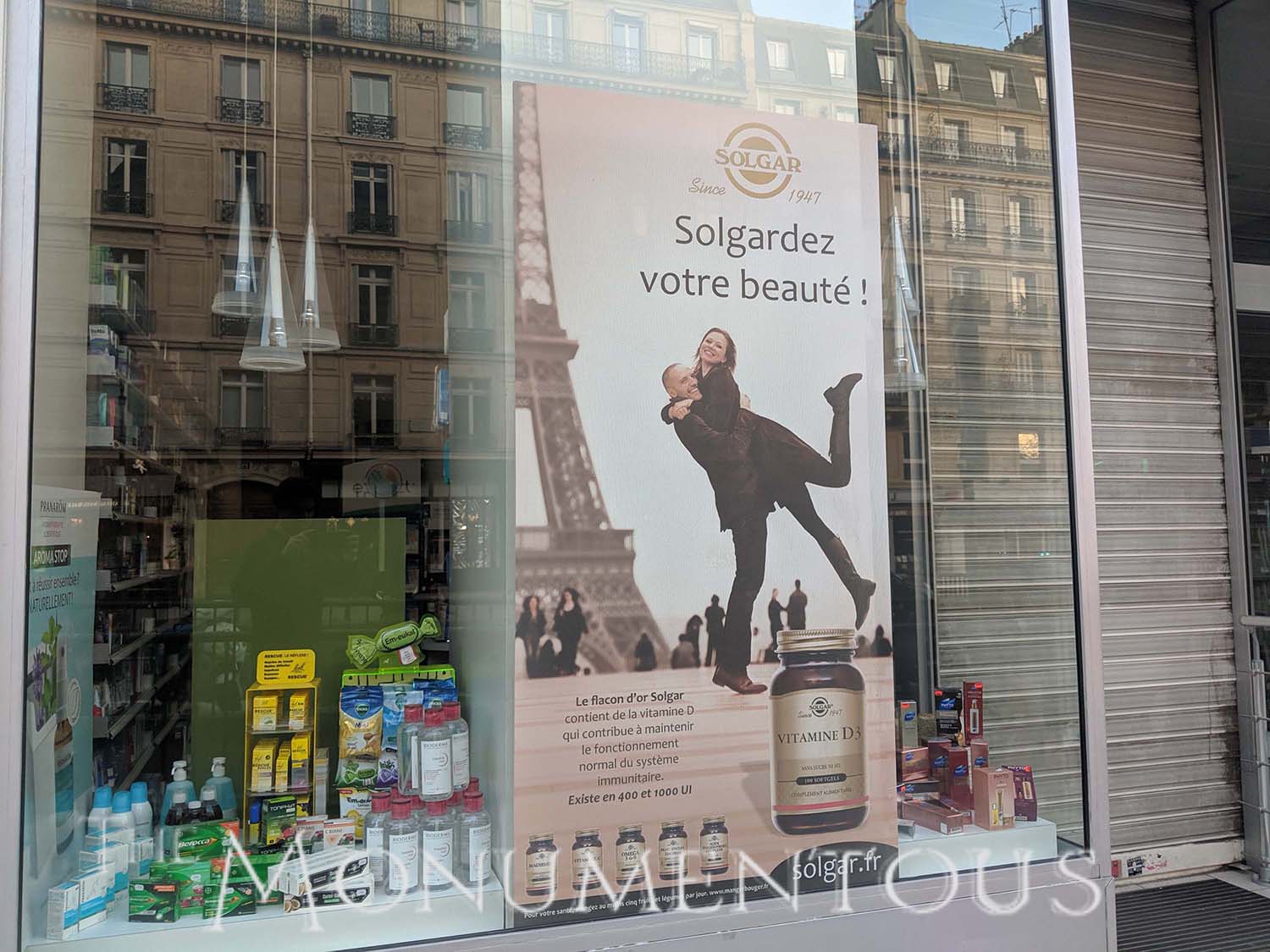 As arguably the most famous monument in the world, the Eiffel Tower in Paris, France, attracts millions of people every year while also enabling an incalculable impact on the economy and culture of the region. This impact can be seen in everything from the multiple restaurants in the Eiffel Tower itself to the items for sale that have the monument incorporated in them to the countless ways businesses and organizations utilize the Eiffel Tower.
As arguably the most famous monument in the world, the Eiffel Tower in Paris, France, attracts millions of people every year while also enabling an incalculable impact on the economy and culture of the region. This impact can be seen in everything from the multiple restaurants in the Eiffel Tower itself to the items for sale that have the monument incorporated in them to the countless ways businesses and organizations utilize the Eiffel Tower.
The tallest structure in Paris and at one time the entire world was only supposed to last for 20 years. The fact that it has been able to endure and thrive for far longer is a result of how it has come to be seen as a symbol of Paris and icon for France. That outcome illustrates the power of monuments to completely transform a city and region in ways that are as beneficial as they are formidable.

The Entrance to the Exposition Universelle of 1889
The Exposition Universelle of 1889 was held during the year of the 100th anniversary of the storming of the Bastille, which made it an especially notable event for Paris and for France as a whole. The centerpiece for the event needed to catch everyone’s attention, and while Gustave Eiffel initially showed little enthusiasm toward the design presented to him by engineers from his company, he would eventually position the creation of the monument as an expression of France’s gratitude to the Revolution of 1789.
Work began on what would come to be known as the Eiffel Tower in 1887, but it was immediately the subject of controversy. Some critics didn’t think it was feasible to build the structure as designed, while others didn’t want to see the Paris skyline dominated by “this truly tragic street lamp“. The engineering challenges that came with constructing what would be the tallest building in the world were considerable, with the installation of the lifts proving to be especially difficult. Eiffel and his team worked through all of them, and on March 31st, 1889, Eiffel walked the 1,710 steps to the top of the Tower to place the French Tricolour at the top. At the time, the Tower was 312 meters high.
 Eiffel’s permit was only for 20 years, after which the Tower was supposed to be dismantled. However, two million people visited the Tower during the Exposition Universelle of 1889, which fueled the incredible popularity of the monument that continued to attract crowds and attention once it was over. Eiffel also went to great lengths to prove the Tower’s scientific utility and enabled it to be used as a radio antenna tower, which helped to ensure that it was not taken down.
Eiffel’s permit was only for 20 years, after which the Tower was supposed to be dismantled. However, two million people visited the Tower during the Exposition Universelle of 1889, which fueled the incredible popularity of the monument that continued to attract crowds and attention once it was over. Eiffel also went to great lengths to prove the Tower’s scientific utility and enabled it to be used as a radio antenna tower, which helped to ensure that it was not taken down.
Additionally, the Tower has been part of various scientific discoveries and experiments over the decades. That includes playing a part in the discovery of cosmic rays as well as experiments on the action of air resistance on falling bodies. The Eiffel Tower was also instrumental during the Battle of the Marne in 1914 in World War I, when signals sent from the tower directed French troops to the front lines. A Tricolour flag was raised on it just before the Germans were driven out of Paris in World War II, which signaled the eventual liberation of the country.
In 1964, the Eiffel Tower was officially declared to be a historical monument by the Minister of Cultural Affairs, and in 1991 it was declared a world heritage site by Unesco. It has attracted the attention of the world on account of events that range from the display of a large Christmas tree to a world-renowned artist performing a piano recital to a lighting celebration that commemorated the turn of the millennium.
This living history is just part of the remarkable experience of what it means to visit the Eiffel Tower, all of which has been driven by what it means to see the City of Lights from above. However, that view isn’t the only thing associated with a trip to the top of the tower.

From “Follow Gus” to a Transparent Floor to a Wrought Iron Experience
With four distinct levels, the Eiffel Tower provides visitors with a variety of things to see and do, and they vary depending on where someone is headed. Three lifts (North, East, and West pillars) go up to the 1st and 2nd floors of the Tower, each of which provides a distinct view of Paris. A champagne bar at the top of the Eiffel Tower offers visitors a choice of a glass of either rosé or white champagne.
 Visitors can also see Gustave Eiffel’s office that has been restored to its original condition with many of the same furnishings. Using wax models, the scene depicts Eiffel and his daughter Claire welcoming Thomas Edison. The gramophone that Edison presented to Gustave Eiffel as a gift is also on display. Elsewhere on this level, numerous panoramic maps allow visitors to get a sense of their position.
Visitors can also see Gustave Eiffel’s office that has been restored to its original condition with many of the same furnishings. Using wax models, the scene depicts Eiffel and his daughter Claire welcoming Thomas Edison. The gramophone that Edison presented to Gustave Eiffel as a gift is also on display. Elsewhere on this level, numerous panoramic maps allow visitors to get a sense of their position.
On the 1st floor, a transparent floor has been installed, which provides a look at everything below, similar to the view created at other monuments. The “Follow Gus” activity offers young visitors on the first level with a fun and educational experience dedicated to children aged 6 to 10. Equipped with a bilingual French-English booklet-game and a little pencil provided for them, young visitors learn a thousand aspects of the history of the Eiffel Tower, about its creator but also about the landscape of Paris seen from that level.
Lifts bring visitors up and into the Tower, but coming down by foot is an option, which allows them to really see Paris from numerous perspectives. Additionally, this trip gives them an up close and personal look at the wrought iron of the Eiffel Tower that defines its shape and identity. Depending on the time they’re there, visitors can also experience the sways of the Tower, which can move by up to 9 centimeters in the wind.
The experience associated with seeing Paris from such heights is undoubtedly the most notable part of a visit to the Eiffel Tower, but the numerous restaurants, gift shops and buffets showcase some of the direct economic opportunities that this experience has opened up. However, the indirect opportunities it has also created might be even more powerful and have come to benefit a great number of people.
Direct and Indirect Revenue Opportunities for the Tower and Paris
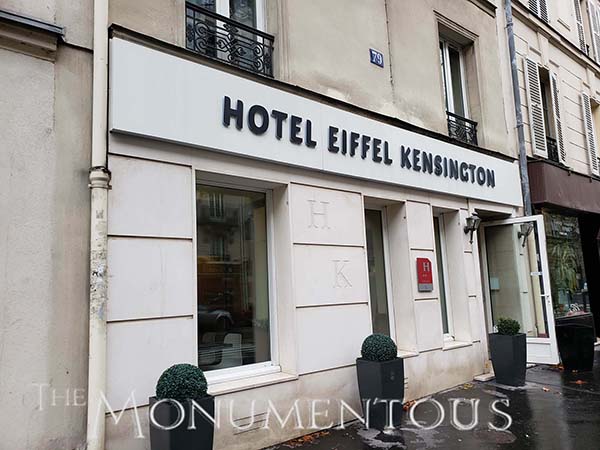 When originally built, the first level contained three restaurants—one French, one Russian and one Flemish—and an “Anglo-American Bar”. After the exposition closed, the Flemish restaurant was converted to a 250-seat theatre. Originally, tickets cost 2 francs for the first level, 3 for the second, and 5 for the top, with half-price admission on Sundays.
When originally built, the first level contained three restaurants—one French, one Russian and one Flemish—and an “Anglo-American Bar”. After the exposition closed, the Flemish restaurant was converted to a 250-seat theatre. Originally, tickets cost 2 francs for the first level, 3 for the second, and 5 for the top, with half-price admission on Sundays.
Things have changed a great deal since then, but these important sources of income are still present. Today, the 58 TOUR EIFFEL, Le Jules Verne and the various buffets on the esplanade, first, and second floors represent the most lucrative sources of revenue for the Eiffel Tower, while admission tickets have changed rates and currencies since the Tower opened.
The Eiffel Tower’s shops also sell a wide range of products and souvenirs. Each shop has its own specialty (gourmet, fabrics, home, etc.) and there are shops on every floor. Items available for purchase in these shops range from t-shirts to mugs to books that can be purchased by anyone at any time. However, especially unique and exclusive items are also available for purchase.
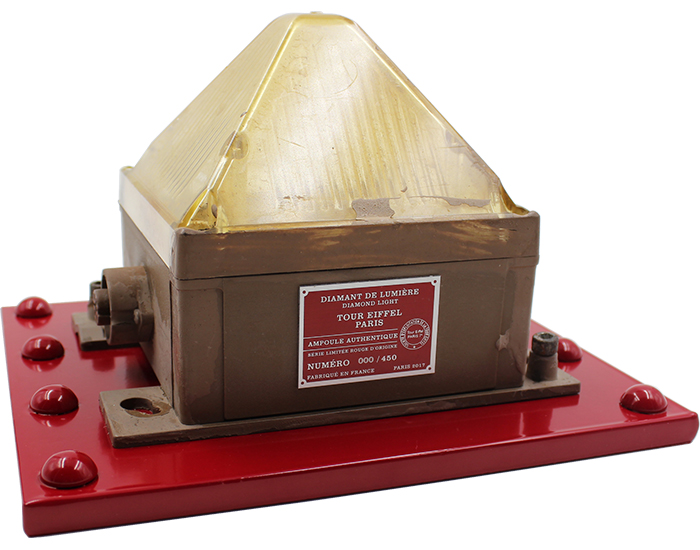 The Diamond Light is a light bulb from the Eiffel Tower that has been made available to purchase. Set on a flexible mild steel base similar to the puddle iron from the Tower, these collector’s pieces have been produced in a limited edition. These bulbs illuminated the Eiffel Tower itself and represent what it means for a monument to create a powerful and unique revenue opportunity.
The Diamond Light is a light bulb from the Eiffel Tower that has been made available to purchase. Set on a flexible mild steel base similar to the puddle iron from the Tower, these collector’s pieces have been produced in a limited edition. These bulbs illuminated the Eiffel Tower itself and represent what it means for a monument to create a powerful and unique revenue opportunity.
While the Diamond Light is only available in a limited manner, various other items and souvenirs that incorporate the Tower can be purchased at countless shops and stores across the city. The popularity of the Tower has fueled this interest and created what amounts to a cottage industry dedicated to the monument. Additionally, shops and restaurants around the city have been able to utilize the Eiffel Tower in their names and logos to open up a variety of opportunities for businesses that aren’t directly connected to the Tower.
The opportunities were opened up on account of European Union copyright law that states that an artistic work is protected during the lifetime of its creator, plus another 70 years. In 1993 the image of the Eiffel Tower entered into the public domain, but that didn’t mean the Eiffel Tower would no longer be able to benefit from any images or depictions of the monument. The lights on the Tower were not installed until 1985 and, since they’re considered an artistic work, they will be under copyright protection for a long while, further showcasing how popular monuments can continue to directly and indirectly spur economic opportunities.
From 1925 to 1934, illuminated signs were placed on multiple sides of the Tower, making it the tallest advertising space in the world at the time. While advertisements are no longer hung on the Tower in this manner, the impact of doing so underscores the cultural impact it represented in the early part of the 20th century that has exponentially increased in the subsequent decades.

The Symbol of Paris and France
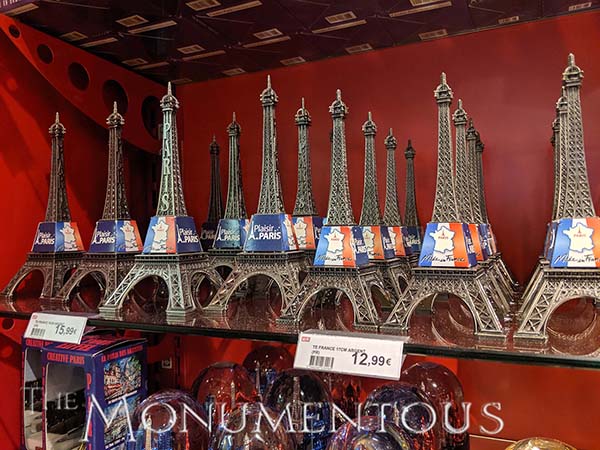 Every year approximately 7 million visitors climb the Eiffel Tower from cities and countries across the world. Since it was opened, more than 250 million people have visited the monument, but these numbers are just a hint of the cultural impact the Eiffel Tower has enabled for the region.
Every year approximately 7 million visitors climb the Eiffel Tower from cities and countries across the world. Since it was opened, more than 250 million people have visited the monument, but these numbers are just a hint of the cultural impact the Eiffel Tower has enabled for the region.
As an illustration of that pervasiveness and popularity, the Eiffel Tower has been the inspiration with the erection of over 50 similar towers around the world. The most famous is likely the Las Vegas Eiffel Tower, which is a half-scale replica of the original, but the way in which the Tower has direct or indirectly inspired the creation of other attractions around the world is undeniable.
That impact can be seen across the world and in Paris itself, where countless vendors and stores base their business around being able to sell items that have some sort of association with the Eiffel Tower. The culture of France also plays an active part of the monument, since 72 of the country’s scientists are engraved in the tower’s first-level gallery.
The Eiffel Tower bills itself as always having something to offer, day or night, summer or winter, and that extends to the countless events that have taken place there. Events such as Johnny Hallyday’s concert, which was performed in front of 600,000 spectators and broadcast on television, demonstrate that residents and visitors have come to celebrate the impact of the Eiffel Tower, and that impact has opened up countless opportunities across the region.
The influence of the Tower can be seen in countless ways across the world, but the fact that the Eiffel Tower has come to be recognized as one of the most important monuments in the world and a symbol for Paris and France is just part of the legacy it has enabled in the present and for the future.

A Practical and Aesthetic Legacy
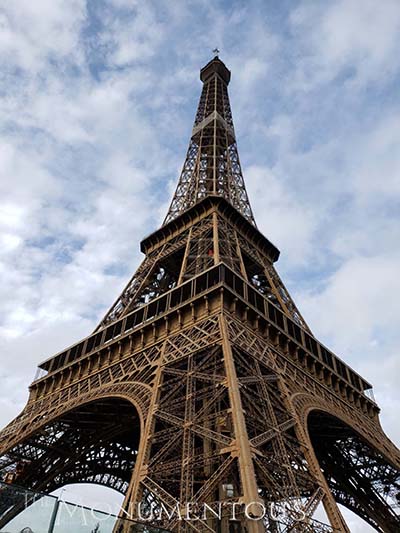 It’s possible to see the Eiffel Tower from almost any elevated location in Paris, but it also provides an incredible look at the landmarks and monuments throughout the city, which range from the École Militaire to the Arc de Triomphe to the Champ de Mars. The iconic nature of the Tower isn’t just about height though, as it’s driven by something a monument of any shape or size can enable.
It’s possible to see the Eiffel Tower from almost any elevated location in Paris, but it also provides an incredible look at the landmarks and monuments throughout the city, which range from the École Militaire to the Arc de Triomphe to the Champ de Mars. The iconic nature of the Tower isn’t just about height though, as it’s driven by something a monument of any shape or size can enable.
The Eiffel Tower showcases what it can mean for a monument to positively impact the culture and economy of a city, but all of that derived from the Tower’s practical origin as a landmark for the Exposition Universelle and was continued when it served as a radio transmitter. These practical purposes enabled it to live on past the initial 20-year permit, creating a legacy that is as much about practicality as it is about aesthetics. This combination is at the heart of the monumentous impact the Eiffel Tower has come to create in Paris and beyond, and demonstrates how monuments of any type can eventually have a similar influence.
